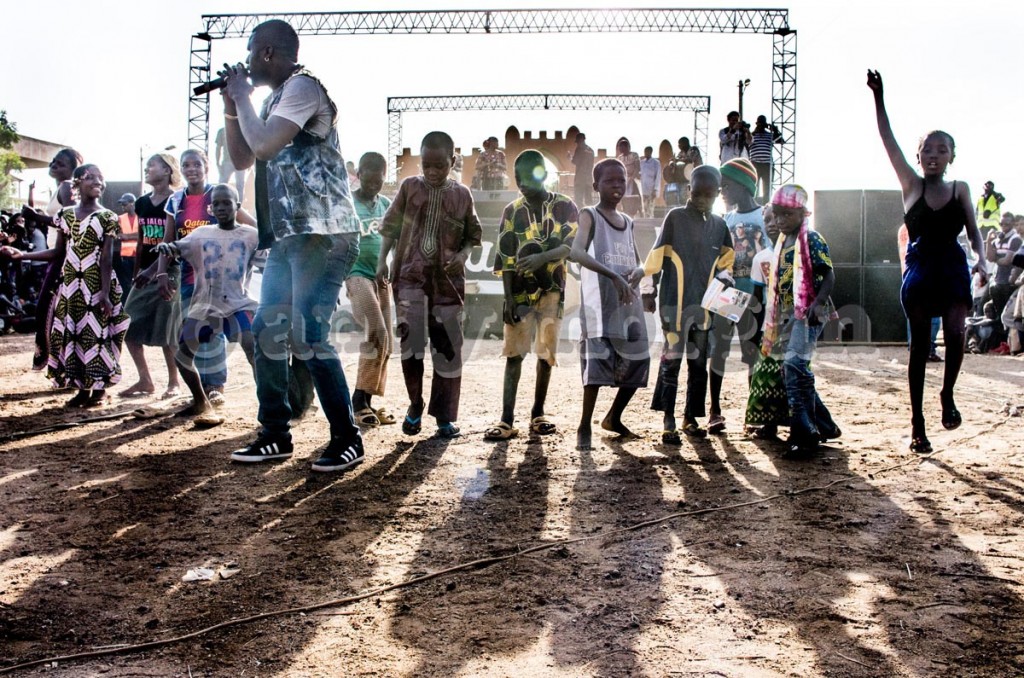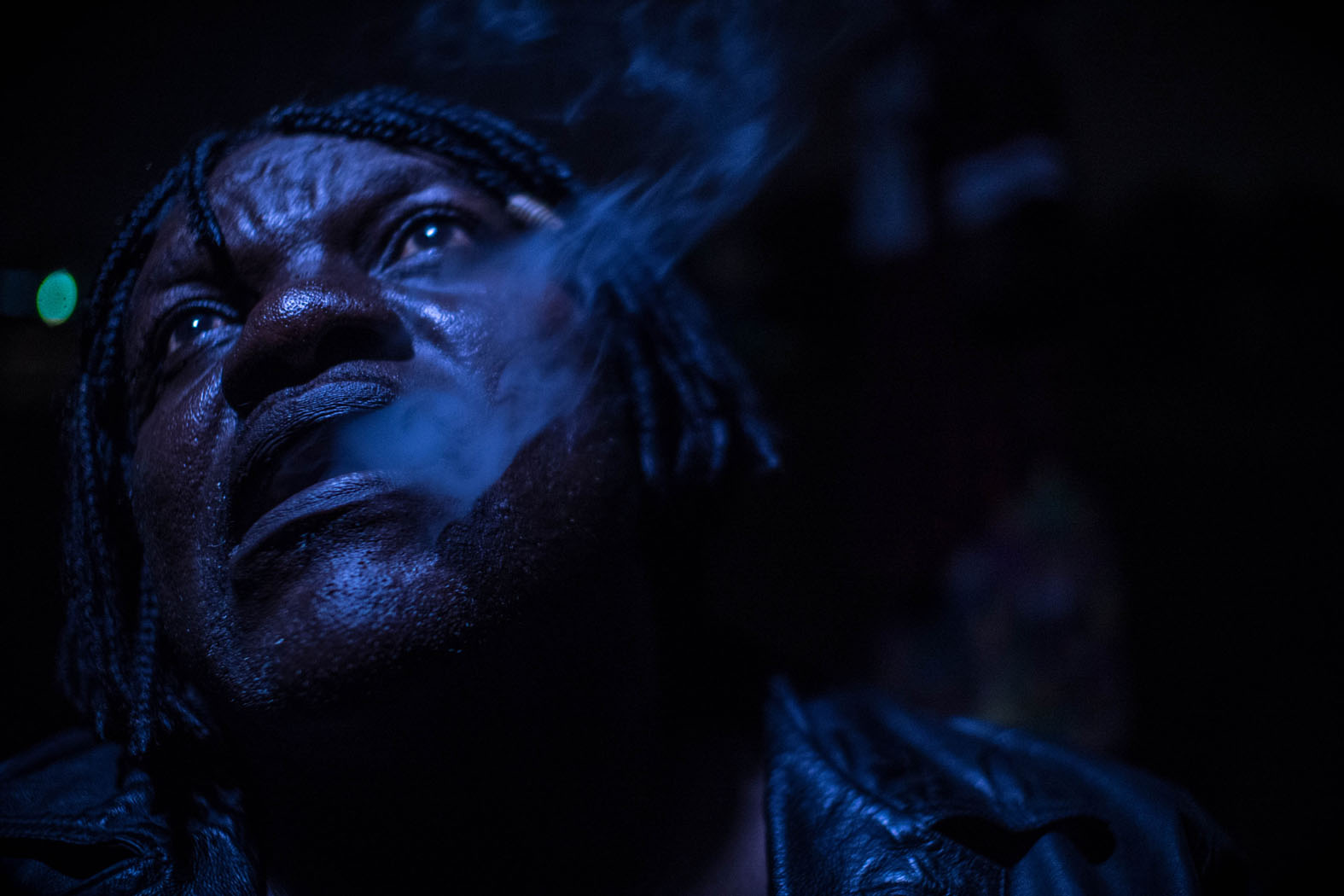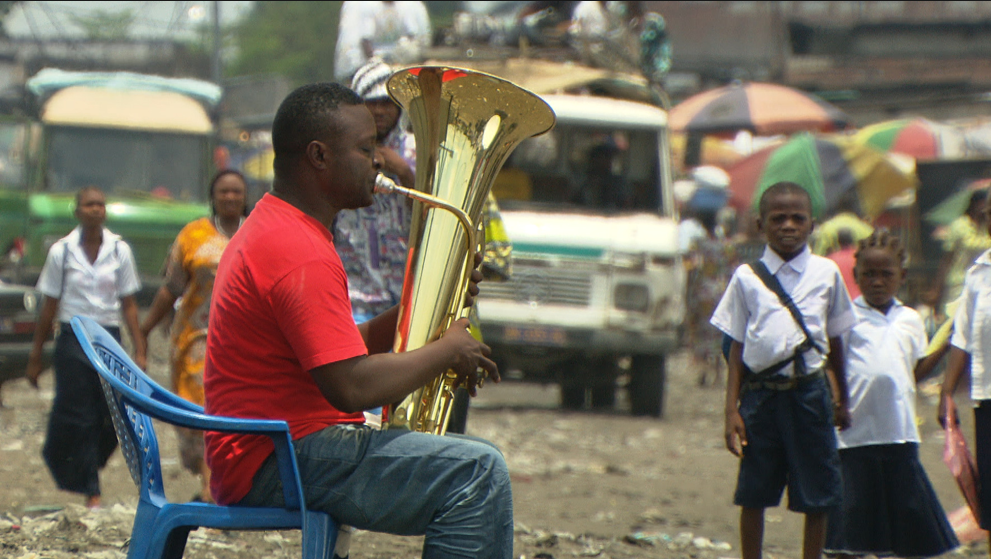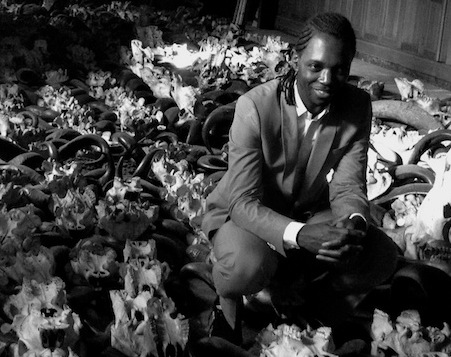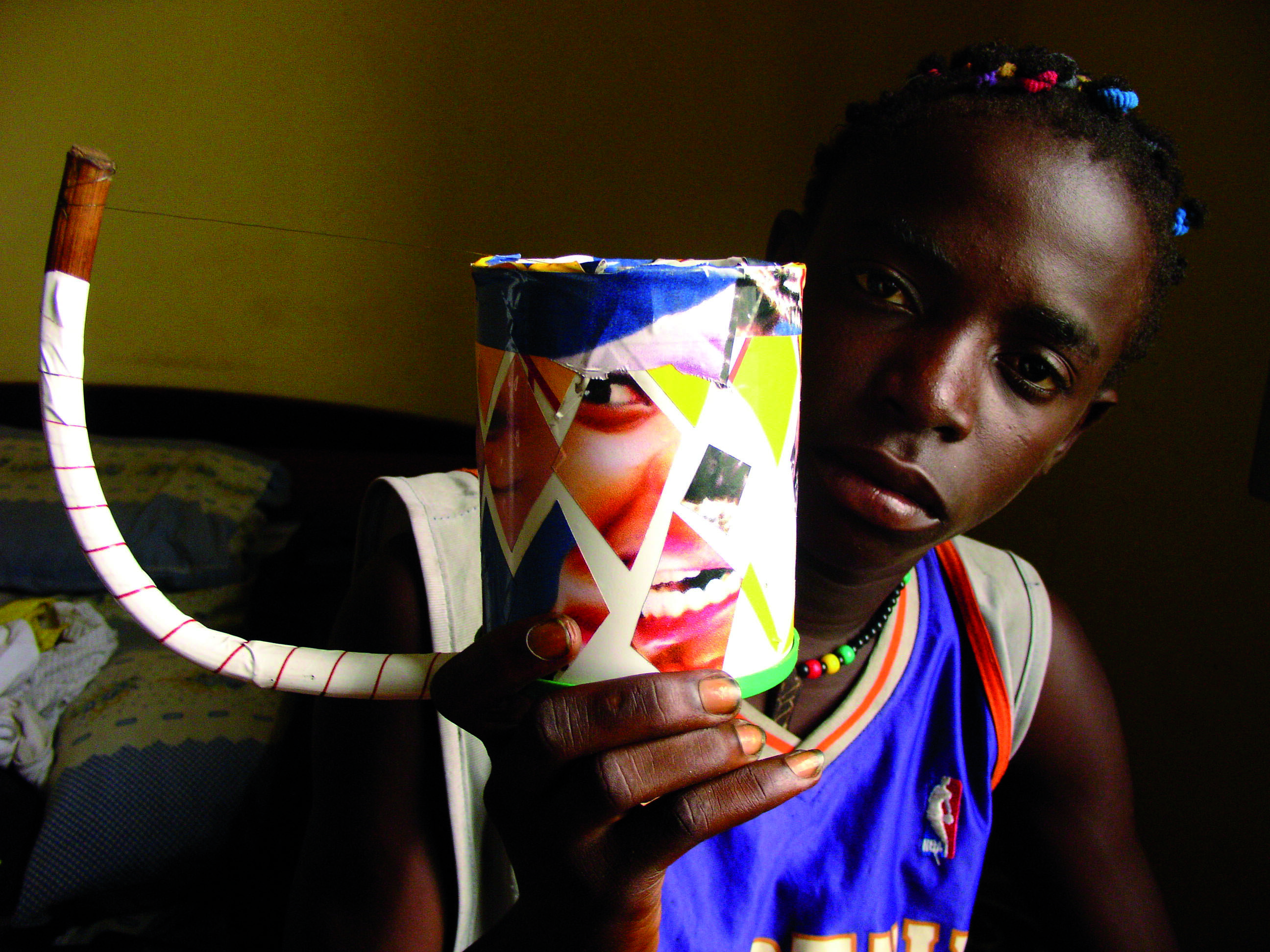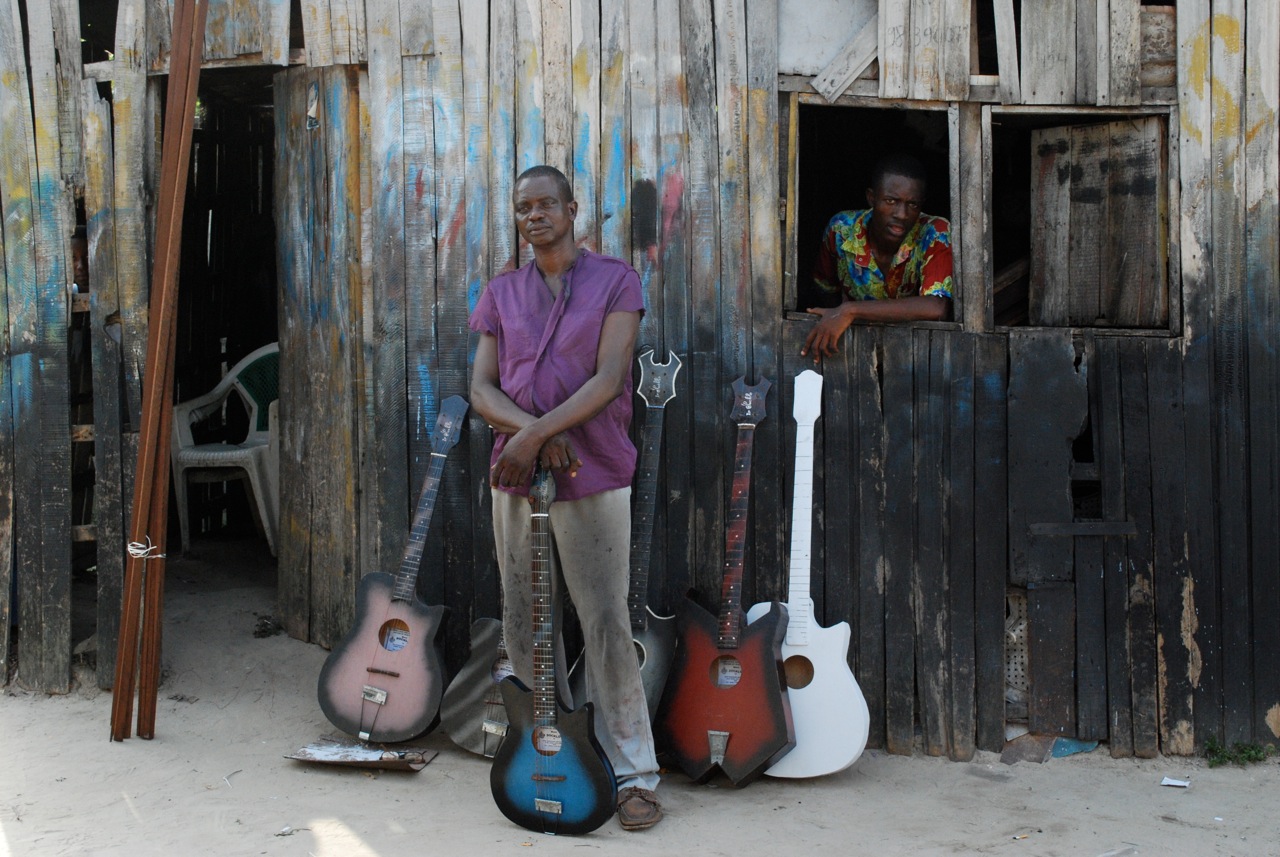PHOTO ESSAY – Festival on the Niger 2014
Ghostboy spoke in penetrating riddles. From his pale skin, I guessed he was a Fulani, with maybe a bit of Touareg or Arab thrown in there too. Not that it mattered. Bitterness and pride mixed in with the gentleness of his smooth face. He never smiled.
He followed us, my German friend Herman and I, down to the Niger river beach. He’d been following us since morning, glum, tight-lipped. He stuck to us despite my pep-talk. “I’m a musician too, you know,” he’d said after a while. “I write songs, and poetry.” “Ok, mon ami, I just gotta say something,” I answered, turning on him, rag already lost. “It’s no use just stalking us with claims that you’re a musician and a poet. You have to start the battle somehow. Don’t hawk the ghost of your talent, show it!!”
Those words felt brutal. Our whole relationship, with its crazy imbalances, felt brutal. Ghostboy was young, maybe 19 or 20 years old. He brought us Touareg jewellery, then Dogon carvings, then other stuff. It kept coming. He never gave up or let go. He didn’t say much but he seemed angry. I felt brutal.
The beach was a different space to the Festival, which was right next door. People were just doing whatever they normally do: stacking wood, carting goods, carrying dishes of oranges or dates on their head, lounging under lean-tos that leant like crazy, laughing, brewing tea. Upended, the empty porter carts looked like tomb-stones sculpted from metal tubing, with the handle forming a cross against the pale Sahelian sky. The wood piles made alleyways on the beach. The ferry trundled back and forth, disgorging its passengers at either shore. People didn’t take much notice of us. Life went on.
Approaching the Festival site you could feel the fever. It was hard to diagnose: music, release, expectation, opportunity, commerce, laughter, pride, they were all in there somewhere. Ninety-eight percent of the revellers were Malian. Most of the Europeans, not more than a hundred of them, had some kind of mission going on: journos, photographers, film-makers, funders, advisors, humanitarians, UN folk, diplomats, music managers, musicians. Not many straight-up just-curious tourists. This was still the red zone.
Last year, the Festival on the Niger had been cancelled at the last minute. French transport planes full of soldiers and hardware had landed in Bamako only two weeks before the festival was due to start. The troops were part of Operation Serval, on their way up north to fight the jihadists and put Mali back together again. Segou was on their route. You can’t have a much of a party with tanks rolling past your door.
“The whole economy of this region, the major part in any case, is geared around the festival,” Mamou Daffé told me. “Imagine a year without the festival. It meant that the economic and cultural stakeholders lost up to 80% of their revenue. It was terrible, enormous.”
Mamou Daffé founded the festival back in 2004. He was head of the local Office du Tourisme at the time. He wanted to haul Segou up out of its status as mere truck stop on the road to bigger tourist attractions – the African ‘Hobbiton’ of the Dogon country, Djenné with its mighty mud mosque, Timbuktu the legendary. Segou was once the capital of the Bambara kingdom, an animist polity bought low by the Islamic jihad of El Hadj Oumar Tall. Jihad is nothing new in these parts. Bamako was just a little fishing village back then. Now it’s Mali’s capital city and Segou’s just a relatively minor tourist attraction; Winchester to Bamako’s London. The big wheel keeps on turning.
This year the Festival on the Niger was celebrating its tenth birthday. It’s not as famous as the Festival in the Desert, but it should be. The site was impressive, the main stage a kind of pontoon floating in the Niger, a few metres off shore opposite a steeply sloping stone quay where the audience sit. There was another stage about four hundred metres away that focussed on up and coming talent. It was free to all comers during the day. In between them there was a marché with a few bars and a ‘street’ of stalls selling clothes, crafts, food, books or the work of organisations like the Segou University Students’ Association, the Segou Chamber of Commerce or MINUSMA – the UN mission to Mali. It all looked…well…like a festival; like WOMAD or Glastonbury, but much smaller and in Africa, on the banks of one of the greatest rivers in the world.
I went and loitered in the book stall. The complete works of Amadou Hampâté Ba were on sale. He’s the Malian writer and intellectual who said, about the griots: “Every time one of those old men die, it’s like a library that burns.” Or words like that. He also said, “between your truth and my truth lies the truth.” I like that. This is no time for absolutes. It’s a time to lick wounds, your own and those of others. It’s a time to value peace.
“Above all, we understood that peace is a resource, an extraordinary asset,” Mamou Daffé told me in answer to a question about the lessons of the crisis in the north of Mali. “We understood that without peace, nothing is possible. That’s why this particular edition of the festival is very welcome, with its powerful themes, which are national reconciliation, cultural diversity and national unity.”
So peace was back. So was music. The jihadists tried to ban all music except Quranic chanting in the north of Mali. But it just came back like Whack-a-mole. How could it not? Music in Mali is no different from the water that flows in the Niger, always there, glinting, life-giving: an old man smiling at his errant children.
The first night of the festival, the moon shone like a scimitar in the sky. I went to the Festival Village early, a nondescript space for about six hundred people a few kms away from the main site. It was empty. The mosquitoes were disco dancing around the strip lighting. Tonight was the Nuit de la Paix – A Night of Peace – organised by the Festival in the Desert, which was still banished from its home in Essakane near Timbuktu by threats of insecurity, real or imagined.
To contribute something meaningful to the cultural calendar, the Festival in the Desert had organised a Caravan of Peace in collaboration with the Festival on the Niger and the Taragalte Festival in southern Morroco. The caravan had travelled to Segou from its starting point at the Taragalte Festival, via various towns and refugee camps in Mauritania and Burkina Faso. It was a bold adventure. Khaira Arby and Amanar, the Touareg band from Kidal lead by Ahmed Ag Kaedi, had both taken part. Now, tonight, it was the Caravan’s grand finale, here, as guests of the Festival on the Niger.
But the Festival in the Desert weren’t happy. They wanted this statement of reconciliation and peace to be made on the main stage by the river, not in a ‘fringe’ space a few kms away. They needn’t have worried. By the time the MC came out wearing his tracksuit to start warming up, the Festival Village was packed. Mamou Daffé and Manny Ansar, director of the Festival in the Desert, were sitting all self-conscious and stiff amongst the big cheeses that always populate the front row of any important gig in Africa. The audience became looser, wilder, more joyful as you moved towards the back; the mamas all blithe and chatty in their riotously coloured robes and head dresses, young men in dickie bow ties, sharp enough to slice a heart in two, the youth giggling in their gaggles. The ambiance was good.
Speeches. Lots of speeches. Malians love their speeches. “’Daffé’ means ‘horse’ in the local language,” the MC tells us, “and the horse is most faithful of animals. Daffé is faithful to Segou. Thank you Daffé, Thank you Minusma, Serval, Morocco, Senegal. Peace, peace above all else.” “The people already have peace in their hearts,” said Manny Ansar, “it’s up to the politicians now.” “People talk about the north, but Manny is my brother,” answered Daffé.
A griotte in a lavish yellow dress comes on. Her voice splits the night like an axe slicing through kindling. It’s riveting, insistent. The guitar behind her sounds like the workings of some divine intestinal tract. A man is filming it all on his an iPad. Mali is documenting itself now.
The scimitar moon is slicing through the trees. Khaira Arby bustles onto the stage, all tough mama and female hardcore. That northern rhythm starts to roll out, recalibrating the movement of crowd. Excitement thickens. “Erkus! Erkus!!” she hollers – ‘Clap! Clap!’ (in Tamashek, the Touareg language). No enemies here, not now. No Bambara, Touareg, Songhoi, Dogon or Fulani. Just a crowd and their mad music-induced joy.
After only two songs, Khaira is followed by Amanar: tall shy Ahmed ag Kaedi and his Touareg posse from Kidal. Friends of the republic from deep behind ‘enemy’ lines. But this crowd loves them without moderation. When they play the song ‘Amidinin’ – a lilting version by Tinariwen’s Intidao has been made famous by national Malian TV – it sets the night on fire. I can hardly believe it. “My Friend.” That’s what the song title means. Mali, un et indivisible! – Mali, one and indivisible! At that moment it hits me. In the mouths of politicians, it’s just a slogan, a weapon of both war and peace. But here, in the ‘Gods’ at the back of La Nuit de la Paix, it’s a love thing, an irrational desire, a longing, a hope.
The next night I queued up at the main gates to the site with the good citizens of Segou who could afford the 10,000 CFA (c. £16) weekend ticket for the Festival. Many couldn’t and they stood there like Tiny Tims, noses pressed up against the glass ceiling. We were all frisked, at least three times, before being let in.
“When Salif Keita does a gig in Bamako,” Daffé told me, “It’s 25,000 CFA just for him. Our ticket sales barely pay for the PA system. But we’re fighting an African fight. We said to ourselves, if we can’t provide 40-50% of the budget ourselves, then there wasn’t going to be a festival. It’s a matter of dignity and tradition for us to pay our own way. Here, in Segou, you’ll find an Africa that’s standing on its own two feet, and trying to take responsibility for itself.”
Everything was orderly. We sat on stone steps of the quay. Mobile phones glowed in the dark. The river glowed in the background. Super Biton de Segou’s opening riffs sucked out hollers of recognition. These guys are local heroes, named after Mamary Coulibaly aka ‘Bitòn’, former king of 18th century Segou and founder of the Bambara Empire. A fierce warrior, by all accounts. Mali needs the memory of its great warriors.
Super Biton de Ségou were one of Mali’s greatest orchestras in the days when every region of the country had its own band, financed by the state. They still stir local hearts with their cascading guitar riffs, the indefinable pulsation of their song, the tender currents of their melody. When they finish, the head of Segou’s chamber of commerce says a few words: “We thank the almighty for allowing this event to happen.” Then he praises the great river, calling it by its local name Joliba; “the symbol of the blood that runs through our veins.”
Mawula, a musical spectacular about a mythical vulture that seems to symbolise Mali’s fighting spirit is up next. I respect the festival for commissioning new and challenging work. I respect director Adama Traore, a legend in Malian theatre circles. But just when the audience is simmering, hungry for musical abandon, it gets treated to an hour and half long dirge of traditional hunters prancing round the stage, jihadists screaming ‘Allah u Akbar’ and women being raped. This might have worked at a more pensive time, earlier in the afternoon, but now, despite the calabash women, wild leaping men and raw searing chants that reminded me of Moroccan Aissawa, it falls flat on its face. People start to leave. “We don’t want to be reminded about the war,” a local man tells me later, “we want to relax and enjoy music.” The moon is a silver teardrop falling through the clouds.
Next day, down on the river beach, Ghostboy told me about a dream he once had. “It was about Jesus. I saw him walking on the river. Right there. I’m a Muslim but I still dreamed about Jesus.” I made some flippant remark to the effect that he must be feeling confused. And then I felt ashamed. I sat there, watching the world unwind to dusk, listening dutifully and intently to Ghostboy’s strange ramblings.
On the smaller ‘discovery’ stage Ben Zabo never unzipped his smile. There he was, a local boy made good come home to his people. There’s no greater joy than that. His band, all wearing the ‘mohawk’ crest of the animist Bwa people, cured the oppression of heat and dust with raw cruising funk. We all had smiles zipped on to our faces.
That same afternoon I’d seen the rapper Mylmo being mobbed by a crowd of local fans. He left me with the feeling that I had to revisit all my preconceptions about Malian music. It’s the rappers who fill the stadiums here, not the griots or the old dance bands. And although some of them have taken a fancy to chunky Eric B and Rakim style chains, super fly threads and Beemers, the best rappers have become the voice of the voiceless, those who “say on high what is being thought below.”
Mylmo is considered to be among the best. He’s a prince, tall, talented and full of shy charm. He strides on to the main stage to a mighty cheer and asks us all to observe a minute’s silence for the fallen soldiers. The moon is a bright lemon, alive and tart. The river blushes silver. Mylmo takes hold of the flow, dedicates a song to Nelson Mandela and shouts “We’re rappers, not gangsters!” The moussou – the women – scream! Mylmo substitutes bombs and AK47s with the mic and the tama drum. He sings an homage to Oumou Sangare. The moussou go wild. He spits a tune about teenagers who go into prostitution. The moussou get even wilder. Specific lines bust the scream-o-meter. I revel in the spectacle whilst cursing my incomprehension. Fellow rappers Tal B and Master Soumy come on for guest spots – a Malian rap summit. The wildness redoubles.
The moon is an eye full of love. This is a night for the moussou. Stelbee from Burkina Faso is a femme consciente: a blender of reggae, African sensuality and Gallic style. She’s a warm mug of peace, love and togetherness. The moussou love her. They’re dancing in the river. I’m not so sure.
Sekouba Bambino appears all in white, a vision of romantic perfection. He comes from Guinea, just like the river. “Women will welcome him, men will tolerate him,” the MC tells us. A djembe drum clatters. A balaphon rattles. Everybody stands up. Sharp-tongued moussou berate their sisters for blocking their view. “This one’s for peace!” Deci-belles! Sekouba Bambino’s voice has more power and suppleness that even Salif Keita’s. But Salif’s has the crackle of experience. Sekouba is sensuality personified, in a land whose sensual fires are regularly doused by Muslim reserve. Although tonight, barely.
Mornings were for talking. The conferences at the Centre Culturel Koré, another of the Festival’s ambitious initiatives, told me that Mali has long lost its sense of deference. The debates were lively. The panelists often under fire. Next door the exhibition space was showing work by Malian artists and photographers on themes such as ‘Love’ or ‘the Masks and Puppets of Mali’. In the dusty back alleys, Orange organized a free stage for hip hop. There was an international fair at the Foire Kènè and traditional troupes at the Festival Village. This was a city-wide feast of culture.
I stumbled on a river pageant just by chance, of men and women chanting the rawest roots music I’ve heard in moons. It sounded like the dusty grandmother of Moroccan gnawa, which made complete sense. They arrived in huge pirogues, like itinerant party-makers, banging, chanting, wailing. The quays were packed and expectant. Then the dances started. A fish crawled onto the beach, snapping wildly at anyone who approached. Then a crocodile. Then a hippo. It was a wild screeching rush, gleeful and breathless, like riding a helter-skelter without ever leaving the ground. Mali’s animist heart beat loud, the one that some feared lost.
That night, the last, the MC was superbly comic. People were in stitches. “Voulez vous voir le cheval blaaannnc!!!” (“Do you wanna see the white horrrrsssse!”). It took me a while to work out he was talking about Salif. But first I had to tussle with Mao Otayeck: Lebanese Ivory Coaster via LA, Paris, Dakar and some place in the middle of the Atlantic that I have no wish to ever see or hear. The man’s got credentials – Stevie Wonder, Alpha Blondy and many others, so it’s hard to explain my aversion to this kind of music: too many instruments, too many notes, too much clever fiddling and faddling around. Just fucking entertainment, that’s all it is.
The moon peeps shy through the clouds. Vieux Farka Toure cleans the palate. Black suit, white rock’n’roll energy, total confidence. This is Songhoi guitar music for the 21st century, respectful of Ali Farka but free of him too. Vieux doesn’t have the poetic touch of his father, but he has plenty of 1.6 Litre V8 turbo-charged guitar licks. All you have to do is get on board, strap yourself in and enjoy the level horizons of the Sahel as they blur past you. It rocks.
Then its Salif. The King himself. A Keita to his very marrow. Floppy white hat, brown black tabard. How many victories and defeats are there in that voice? It’s not the most beautiful any more, not in the conventional conservatoire sense at least. But it holds whole histories of yearning. The backing band are loose and relaxed. Or should that be shambolic? Don’t know, don’t care. The guitar has the fluency of speech. The kamelgoni scratches you in all the right places. The music picks you up and cradles you. There’s a change of tempo. The energy rises several notches. Salif leaps in the air. Then…
Wow. I’m watching Salif Keita on the banks of the Niger, in his heartlands: the old river in the background, calm, ghost-silver, indulgent life-giver.
It’s all endless. Then it ends.
Andy Morgan. (c) 2014
First published in fRoots – May 2014
PHOTO ESSAY – Festival on the Niger 2014

